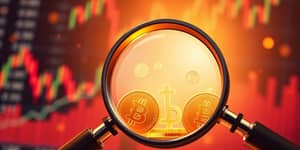
In a world of shifting economic power and heightened volatility, embracing a global investment strategy has moved from a choice to a necessity. Investors who ignore international markets risk missing growth opportunities and exposing their portfolios to concentrated risks.
The past few years have demonstrated that no single market can guarantee uninterrupted growth or low volatility. In 2022, the S&P 500 fell by –18.11%, while a basic U.S. 60/40 stock-bond portfolio declined –15.79%. By contrast, a globally diversified portfolio lost just –11.80%. This gap has only widened in 2025: diversified portfolios have outperformed concentrated strategies during tariff shocks and geopolitical tensions.
Trade disruptions and policy shifts have become more frequent. U.S. tariff policies and retaliatory measures from trading partners have increased market swings. At the same time, a weakening dollar has boosted the returns of foreign investments in dollar terms, making international assets even more attractive.
Historical analysis underscores the tangible benefits of diversification across regions and asset classes. During downturns, well-diversified portfolios have proven remarkably resilient, cushioning losses and offering more stable returns over full market cycles.
These performance differentials are not anomalies. They reflect structural shifts in the global economy and the interdependence of markets. Investors who remained U.S.-centric have felt the full brunt of domestic market corrections, while those with international exposure benefited from diversified growth drivers.
Several underlying factors are accelerating the case for global diversification:
These forces show no signs of abating. As global supply chains evolve and economic power shifts, investors who maintain a narrow domestic focus may face heightened risk without the offsetting benefit of uncorrelated returns.
International markets are not just safety nets during downturns; they offer unique growth prospects driven by innovation, demographic trends, and valuation discrepancies.
Valuation gaps: As of late 2024, international stocks traded at significantly lower multiples than U.S. equities, implying higher recovery potential when global growth rebounds.
Innovation Outside the U.S.: Technology, biotech, and green energy sectors are expanding rapidly in Europe, Japan, and emerging markets, challenging the notion that the U.S. is the sole engine of innovation.
Emerging Markets Upside: With young populations and rising incomes, emerging economies are projected to account for 50% of global GDP within two decades, fueling long-term consumer and infrastructure growth.
Translating these insights into actionable strategies requires thoughtful asset allocation and disciplined execution. Below is a sample portfolio that reflects broad global exposure across stocks, bonds, and alternative assets for 2025.
Regular monitoring and periodic review and rebalancing ensure that portfolios remain aligned with evolving market conditions and personal circumstances. Investors should adjust allocations after significant market moves or life events.
Global diversification is at its core a risk management tool. By spreading investments across countries, sectors, and asset classes, investors can achieve reduced portfolio volatility without sacrificing returns over the long term.
Within each asset class, further diversification—such as varying credit quality in bonds or blending large- and small-cap equities—enhances resilience. This multi-layered approach helps limit drawdowns when specific markets or sectors face headwinds.
Beyond individual portfolios, entire economies benefit from diversification. The Global Economic Diversification Index shows that countries with balanced economic structures outperform peers in sustainability, resilience, and inclusive growth.
The 2025 EDI+ framework now incorporates digital trade and climate adaptation metrics, underscoring the importance of cross-border collaboration and technology adoption. As policymakers adopt these principles, they set the stage for stronger economic backdrops that investors can leverage.
The era of domestic-focus investing is giving way to a new paradigm. Global diversification is a practical imperative—not an academic exercise. It equips investors to navigate uncertainty, capture opportunities outside the U.S., and build truly resilient portfolios.
For individual investors, the path forward involves embracing international exposure, adhering to strategic allocation targets, and maintaining discipline through market cycles. For policymakers, fostering open markets, supporting digital trade, and encouraging diversified economic policies will drive long-term prosperity.
By transcending borders in our investment thinking, we unlock a world of possibilities and safeguard wealth against unforeseen shocks. In today’s interconnected global economy, diversification is no longer optional—it is essential.
References













